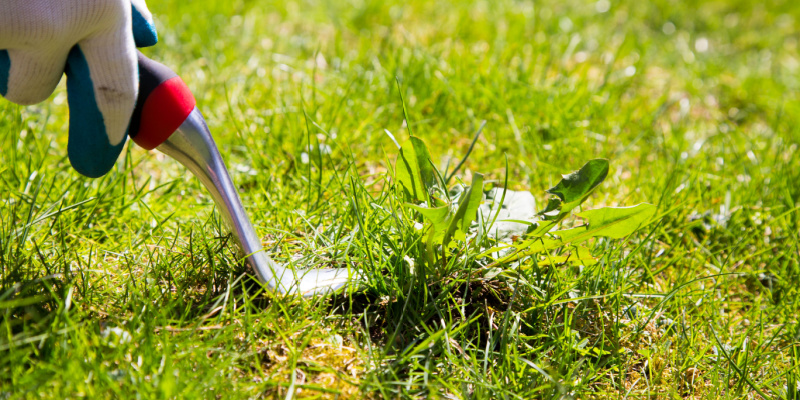Weeds can be a significant challenge for homeowners trying to maintain a healthy and attractive yard. Not only do they detract from the beauty of your lawn, but they can also compete with your grass and other plants for nutrients, water, and light. If you’re facing a yard overrun with weeds in Ohio, here’s a step-by-step guide on how to tackle this common lawn care problem.
Step 1: Identify the Weeds
The first step in effective weed control is to identify the types of weeds you’re dealing with. Common weeds in Ohio include dandelions, crabgrass, and clover. Each type of weed may require a different approach for removal and prevention.
Step 2: Understand the Causes
Weeds often thrive in lawns that are not in optimal health. Common causes of weed proliferation include:
- Poor Soil Conditions:
Compacted soil, low fertility, or an improper pH balance can hinder grass growth and encourage weeds.
- Improper Lawn Care Practices:
Over or under-watering, mowing too short, and irregular fertilization can weaken grass, making it more susceptible to weeds.
Step 3: Implement Cultural Controls
Improving your lawn care practices can significantly reduce weed problems:
- Mowing:
Keep your lawn at the recommended height for your grass type. Taller grass can shade out weed seedlings and reduce their spread.
- Watering:
Water deeply but infrequently to encourage strong root growth in your lawn grass.
- Soil Care:
Aerate your lawn to improve soil structure, and consider adding topdressing to improve soil quality.
Step 4: Manual Removal
For immediate results, especially in smaller areas, manual removal is effective:
- Tools:
Use a weeding tool or a fork to remove weeds, ensuring you get the roots out to prevent regrowth.
- Timing:
Pull weeds when the soil is moist to make removal easier.
Step 5: Use Herbicides Wisely
If manual methods are not feasible due to the extent of the problem, herbicides can be a solution:
- Selective Herbicides:
Target specific weed types without harming your lawn.
- Non-Selective Herbicides:
Useful for total vegetation control in areas where you don’t want anything to grow.
- Timing and Application:
Follow the product instructions carefully for the best results and to minimize environmental impact.
Step 6: Maintenance and Prevention
Regular lawn maintenance is key to preventing weed resurgence:
- Fertilization:
Use a balanced fertilizer to keep your lawn healthy and competitive against weeds.
- Regular Checks:
Keep an eye on your lawn and address new weed growth promptly.
When to Seek Professional Help
If your weed problem is extensive or if you’re unsure about the best course of action, professional lawn care services can be invaluable:
1. Expertise:
Knowledge of local weed types and the most effective control methods.
2. Tailored Solutions:
Customized weed control plans based on your lawn’s specific needs.
3. Time and Effort:
Saves you the hassle of dealing with the problem yourself.
Eco-Friendly Options
For those interested in more sustainable practices, consider:
- Organic Herbicides:
There are eco-friendly products that are less harmful to the environment.
- Natural Remedies:
Some homeowners use solutions like vinegar or boiling water for small-scale weed control, though effectiveness varies.
Dealing with a yard full of weeds can be daunting, but with the right approach, you can reclaim the health and beauty of your lawn. Start by identifying the weeds and understanding why they are thriving. Implementing better lawn care practices, removing weeds manually, and using herbicides responsibly can all play a part in controlling and preventing weeds. For severe problems or if you prefer a professional touch, lawn care services from Weed Busters can provide the expertise and labor needed to get your lawn back in shape. Remember, a healthy, well-maintained lawn is your best defense against the invasion of weeds.

